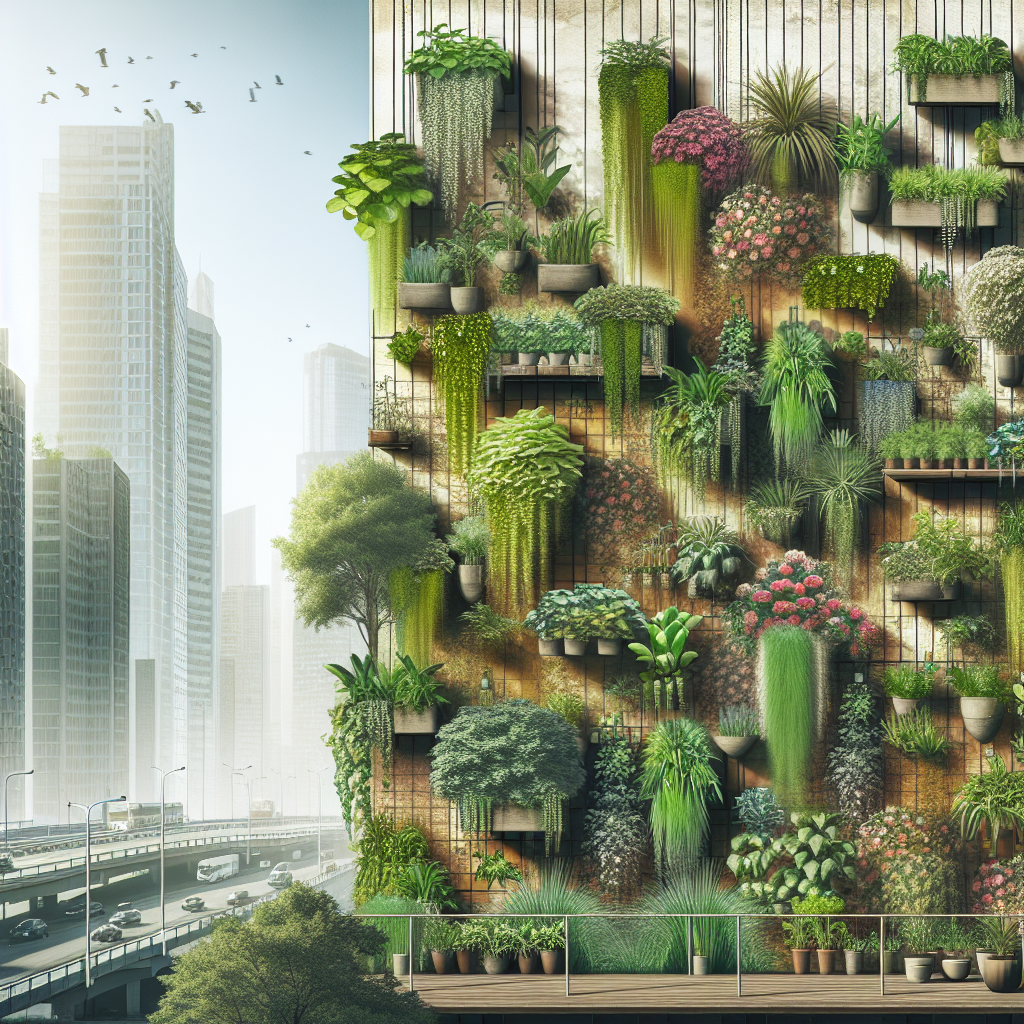In today’s fast-paced world, finding ways to incorporate greenery into our living spaces is essential for mental well-being and overall aesthetics. Enter vertical gardening—an innovative solution that allows you to cultivate your favorite plants, herbs, and flowers in a smaller footprint. In this article, we will explore the myriad benefits of vertical gardening, tips for getting started, and design ideas to maximize both space and beauty in any home.
What is Vertical Gardening?
Vertical gardening involves growing plants in a vertically suspended manner, utilizing walls, trellises, and other structures to save space while creating stunning living environments. This practice, which has a rich history dating back to ancient civilizations, has gained widespread popularity in urban settings where ground space is limited.
Benefits of Vertical Gardening
1. Space Efficiency
For city dwellers and those with small yards, every square inch counts. Vertical gardens can transform a plain wall or fence into a lush green sanctuary, allowing you to enjoy nature without sacrificing precious ground space. Whether on a balcony, patio, or indoors, vertical gardening optimizes your environment beautifully and efficiently.
2. Improved Air Quality
Plants naturally purify the air by absorbing carbon dioxide and releasing oxygen. By adding vertical gardens to your home, you enhance indoor air quality, which can significantly benefit your health. Additionally, certain plants can filter harmful toxins, making your living space not just aesthetically pleasing but healthier too.
3. Aesthetic Appeal
Vertical gardens offer endless opportunities for creativity and design. With various plant types, colors, and textures, you can create a striking focal point in any room or outdoor space. Adding a vertical garden can turn an uninspiring wall into a breathtaking tapestry of greens.
4. Increased Yield with Edible Gardens
Gardening enthusiasts will delight in the ability to grow fresh herbs, vegetables, and fruits without the need for a sprawling garden. Vertical gardening allows you to produce a higher yield in a smaller area, ensuring you enjoy fresh produce right from your home.
5. Noise Reduction
Another overlooked benefit of vertical gardens is their capacity to reduce noise pollution. Plants can absorb sound, creating a more tranquil environment, especially in urban areas where street noise can be overwhelming.
Getting Started with Vertical Gardening
Choosing the Right Location
Before diving into vertical gardening, assess your space. Decide whether you want an indoor garden near a sunny window or an outdoor garden exposed to the elements. Consider factors like access to sunlight, water sources, and your personal aesthetic preferences.
Selecting Suitable Plants
The choice of plants significantly influences the success of a vertical garden. Some popular low-maintenance options include:
- Herbs: Basil, mint, and oregano are great choices for culinary enthusiasts.
- Succulents: These drought-resistant plants add texture and require minimal maintenance.
- Fruits and Vegetables: Strawberries and cherry tomatoes work well in vertical setups, maximizing yield in small spaces.
Building Your Vertical Garden
Several methods exist to construct your vertical garden, and you can choose one based on your skill level:
- Trellises: A classic choice, simple trellises can be adorned with climbing plants or vines.
- Wall-Mounted Planters: These come in various styles, allowing you to arrange plants artistically.
- Pallet Gardens: Repurposed wooden pallets can create a rustic look while providing ample planting space.
Design Ideas to Enhance Aesthetics
Vertical Garden Wall Art
Transform your vertical garden into living art by using an assortment of plants in various shapes and colors. Consider integrating decorative containers or unique structures to create a more visually stimulating landscape.
Vertical Planters with Integrated Lighting
Incorporate LED lighting into your vertical garden to highlight specific plants and create a nighttime ambiance. Illuminated planters can also extend your enjoyment of the garden into the evening.
Combine with Other Vertical Elements
Mix your vertical garden with other design elements. Use hanging lanterns, decorative wall hangings, or even mirrors to reflect greenery, enhancing depth and dimension.
Maintenance Tips for Your Vertical Garden
Watering
Ensure that your vertical garden has adequate drainage. Incorporate a watering schedule and consider drip irrigation for consistent moisture without overwatering.
Fertilization
A balanced fertilizer provides essential nutrients. Organic options like compost or liquid fertilizers can help you maintain plant health.
Regular Pruning
To keep your plants looking their best and ensure they don’t become overgrown, regular pruning is essential. This will also encourage healthier growth and flowering.
Conclusion
Vertical gardening is more than just a trend; it’s a lifestyle. By embracing this space-saving solution, you enrich your living space both aesthetically and functionally. Whether you’re aiming to cultivate a beautiful indoor retreat or luxuriate in fresh produce, vertical gardening holds endless possibilities. As you embark on your vertical gardening journey, remember to let your creativity flourish and enjoy the beauty of nurturing life in your surroundings.


